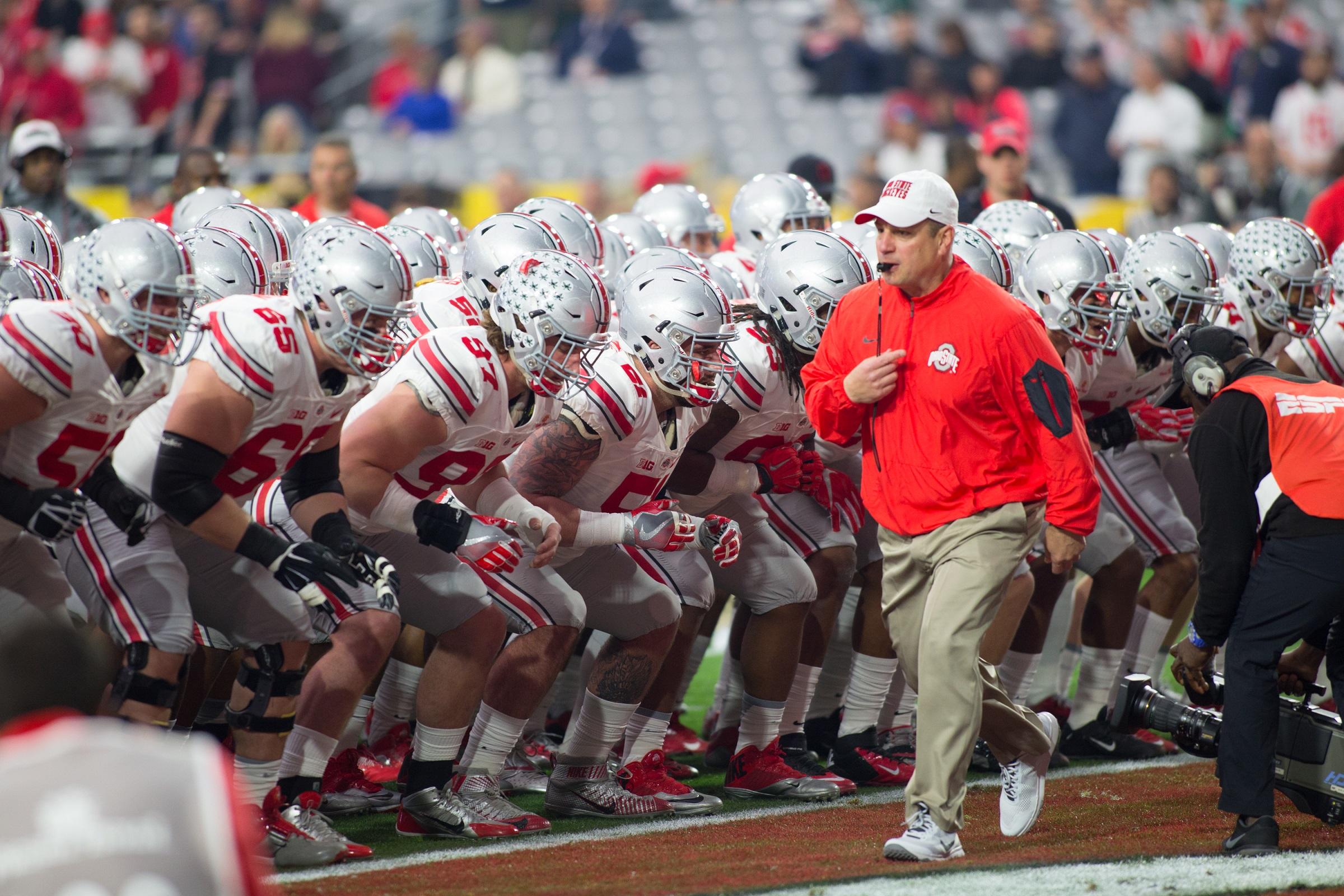Leadership in Athletics: Work Hardening

Hard work or work hardening?
It’s late January, 7:10 a.m., in the Ohio State football weight room. There are 304 days till Ohio State plays “That Team Up North.” Some men are straining, grinding, digging deep while others are struggling, fatigued and losing the mental battle while looking for an opportunity to put their feet or knees down to take a break.
It’s in these moments where teams are made and hard work begins to change. Some men decide to embrace the friction and take on more in the form of helping their teammates, doing great reps and holding people accountable. This is known as “work hardening.” You get out what you put out and at that moment, the real dudes put it all out there for their teammates and themselves. This behavior becomes contagious and it is cultivated under the skillful eye of the head strength coach and staff.
Coach Marotti has a clear mission and role with The Ohio State football team. He tells his athletes:
“I'm here to be your coach, which is to educate you, to help cultivate you, to help motivate you, to help inspire you. To help teach you and lead you in things that you need to be taught.”
He is helping athletes improve and achieve things they thought they could never achieve. This isn’t done by chance; it is intentional, done with the sole purpose of maximizing his athletes’ genetic potential and keeping them safe.
One of the dominant things the program is teaching athletes is work hardening, not hard work.
“It's called work hardening, not hard work, because everyone thinks they work hard, but work hardening is the delicate and essential part of what gritty hard work is — when you're fatigued, when you’re tired, when you're emotionally fatigued, when you're physically fatigued and when your back is against the wall and you have to work hard.”
Work hardening can be summarized as using experiences and situations to teach/coach grit, perseverance, with the will to fight and strain all the time.
Coach Marotti and his staff cultivate work hardening by:
- Coaching with intent – Put players into adverse mental and physical situations. When you put your players in situations that require them to have grit and perseverance to overcome the mental and physical fatigue, you enable them to develop an understanding of work hardening instead of just working hard. Most athletes are going to work, some are going to work hard, but the players who develop this key understanding of work hardening are going to be the ones left standing and pushing onward in the most difficult of times/circumstances.
- Be real –Honestly evaluate your athletes and team. Speaking truth in such a way that motivates them to discover their potential. Athletes need honest feedback to develop them into the best athletes they can be. Giving them constant feedback, whether they want it or not, is an integral part of work hardening. The next step is teaching them to self-introspect. When the coach and player are on the same page as to where the athlete is, where they can be and what they need to do to get there – being real becomes extremely powerful.
- Understanding consequences – The standard must be set with no gray area. Make clear the expectations of being at a certain place, at a certain time, in a certain mood and the consequences of not doing so. Athletes need to understand the consequences and make it clear to the team that in order to do what you want to do when you want to do it you have to be willing to first do what someone else wants you to do, when they want you to do it.
- De-recruitment – High school recruiting is at an all-time fever pitch. Websites are dedicated to each school and discussing the new talent that will be joining the team. The incoming freshmen might have been the best at what they do in high school, but when they join the team everyone around them is talented. They now have to put in the time and effort into figuring out what makes them different in a highly competitive area. You have to indoctrinate social athletes into your team culture and help them understand they are now a part of something bigger than themselves. You also have to help them understand the expectations and the amount of time and effort that has to go into working on their craft.
- Something to prove – Athletes need to have a chip on their shoulder and have something to prove. As some say, “If you have nothing to prove, you will never improve.” This can be to coaches, family or more importantly, themselves. Athletes thrive off of competition and work hardening is teaching athletes to prove to themselves daily what they are capable of achieving.
Work hardening is shown by enabling the players to do the gritty hard work when they feel least capable of doing so. This can’t be left to chance. It requires coaching with intent, real feedback, understanding consequences, socialization and fostering a culture of proving one’s self to themselves.